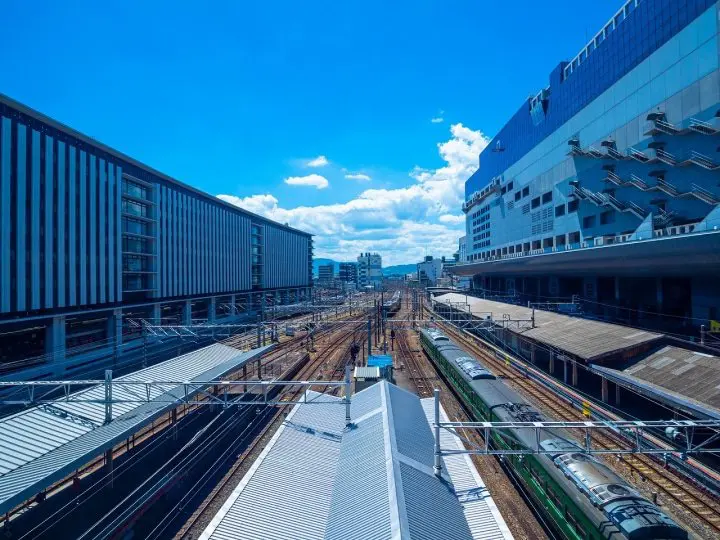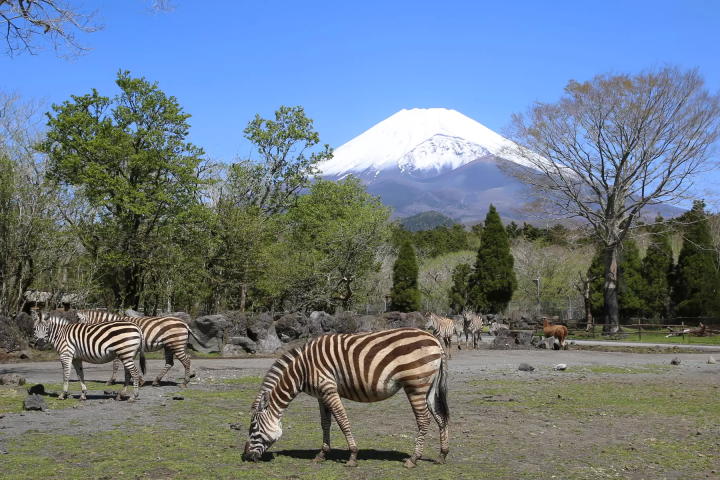Kyoto Travel Tips: Transportation and Major Sightseeing Areas

Kyoto, Japan's history rich and charming old capital, is a city that should be on any traveler's itinerary. In this article we introduce the main sightseeing areas in Kyoto, as well as information on means of transport and how to reach the various areas.
Kyoto, a City Home to World Heritage Sites

Kyoto, a world-famous sightseeing destination ranked on par with Tokyo, is one of the largest cities in the Kansai region and crowded with visitors from around the world every day of the week. The former name of this city, Heian-kyo, illustrates that this city was the capital of Japan during the Heian period, beginning in 794 AD, and more or less retained its capital status until 1868. As the old capital, Kyoto still attracts many visitors thanks to its numerous historical buildings and history spanning over a thousand years.
Temples and shrines registered as UNESCO World Heritage Sites and old machiya, or traditional wooden townhouses, have become shops, restaurants and the residences of merchants and artisans in Kyoto. These beautiful landscapes that have stood the test of time have given Kyoto the nickname "the Eternal City".
Gion area known for its elegance is a place where you can see maiko (*1) on streets, while Kawaramachi and Kyoto Station, which are always full of people, are the thriving modern downtown and the best places to find souvenirs. There are many areas such as Higashiyama, Fushimi, Uji and Kitano where you can visit famous shrines and temples.
*1 Maiko: a girl who performs Japanese traditional dances and plays instruments during high class parties and events.
Read also
Useful to Know! Information about Transportation in Kyoto

Photo by Pixta
When you travel around Kyoto, an important thing to decide is how and which type of transportation you would like to take. The subways, trains and buses don't cover the whole city nor necessarily connect with one another, meaning that you may find yourself having to walk for 30 minutes or more in order to get from one spot to another.
One Day Pass for Subways and City Buses
The Kyoto Subway Line which operates Karasuma line connecting the north to the south and the Tozai line, connecting the east of the city to the west, are the best transport means in Kyoto if you want to travel from JR Kyoto Station to Kawaramachi, Karasuma and the Gion area. The Kyoto City Bus, which goes around Kyoto city, is also convenient because you can get off at a closer stop to your destination than the nearest train station, will require fewer transfers and may be a cheaper fare overall.
They offer Kyoto City Subway One-day Pass for their subways and Kyoto City Bus and Kyoto Bus One-Day Pass for their buses. Both of these include unlimited rides for a day, which is really useful if you plan to visit several attractions in a single day.
If you want to get unlimited rides on both the subways and city buses, the Kyoto Sightseeing One and Two-day Pass would be best for you. You can buy it at information centers for the city buses and subways.
How to Travel from Kyoto Station to Three Famous Spots in Kyoto
When you travel to the three most famous sightseeing spots in Kyoto, (Kinkakuji, Ginkakuji and Kiyomizudera), the majority of visitors take a city bus towards each direction from JR Kyoto Station which will bring them directly to their destination. Unfortunately, buses are likely to get caught in traffic, or be packed with people. We recommend taking the train and the bus instead, for the sake of convenience.
First you take the subway to the nearest subway station to your destination, then take a bus from there. Not only is this faster, it's also easier and much less time-consuming if you are sightseeing during rush hour.
When you go to the Arashiyama area, it is better to take the JR Sagano Line at JR Kyoto Station. You will reach Saga-Arashiyama Station in 16 minutes via the JR Sagano Line. You might think that "taking buses is better because you don't have to transfer at all", but if you want to travel far from Kyoto station, you might find yourself standing in the bus for an hour because of traffic. We highly recommend that you plan ahead and check which transportation system will give you the most efficient travel based on your destination.
Eizan Electric Railway for the Fall Colors
The city buses and subways do not go to Mount Hiei, Mount Kurama and the Kifune area located in the northern part of Kyoto. If you want to visit this area, please take the Eizan Electric Railway. If you travel during the fall, you will be able to see some incredible fall foliage covering the tunnels of this line from the train itself.
Recommended Ways to Travel from Kyoto to Osaka, Nara and Kobe
Various private companies serve their own lines, such as the Keihan Electric Railway which operates between Osaka and Kyoto, the Hankyu Corporation which operates between Kobe and Kyoto, the Kintetsu Railway which operates between Nara and Kyoto and the Keifuku Electric Railroad which operates trains in the Arashiyama area. Fares offered by private companies tend to be cheaper than JR fees. So if you plan to travel to other prefectures from Kyoto, try using these private lines instead.
6 Selected Areas of Kyoto
1. Gion and Higashiyama Area

Photo by Pixta
The Gion and Higashiyama area is one of the top must-visit areas in Kyoto as this is where many of the traditional centers can be found, such as Yasaka Shrine which is famous for its Gion festival, Kōdaiji temple which has a beautiful garden and Hanamikoji street where you can see maiko dance and Minami-za which is the oldest kabuki theater in Japan. There are a lot of places here where you can experience being made over into a maiko or even learn to make your own Japanese sweets - this is an excellent area for those wishing to really experience Japanese traditions and culture.
2. Shijo-Kawaramachi, Karasuma and Omiya Area
If you are looking for souvenirs, Shijo-Kawaramachi, Karasuma and Omiya area are the best for you. Many department stores and commercial facilities are gathered along Shijo street as well as many stores selling various souvenirs are found on Teramachi Street, which is loved by students. In addition Nishiki-koji street which is known as "the Kitchen of Kyoto", is home to Nishiki Market where you can buy Kyoto's specialty foods and seasonal ingredients. Trendy restaurants built in renovated old Japanese townhouses found along Ponto-cho street face the Kamo river. This street is illuminated by traditional lanterns at night, giving it a touch of romance ideal for dinner or drinks.
3. Kitano and Kitayama Area
Kitayama area is a fashionable and modern area which gives you totally different experience than the center area where the old Japanese townscape has been preserved. Here you will find the modern outdoor museum Garden of Fine Arts Kyoto, designed by world famous architect Mr. Tadao Ando, and the Kyoto Botanical Garden which has 12,000 different kinds of plants as well as stylish cafes and restaurants with a sophisticated atmosphere. On the other hand, you will also find the Kitano Tenmangu, a famous shrine dedicated to the god of studies, to whom many students come and pray for success at their exams.
4. Arashiyama and Uzumasa Area
The Arashiyama and Uzumasa area is located a short distance from the center of Kyoto city, but is a scenic area with a magnificent natural environment. After strolling through their refreshing bamboo grove, you can view the sunset on the river from Togetsukyo Bridge, then try tofu dishes, their local specialty, at a nearby restaurant. The Sagano Romantic Train operates in the forest here, allowing you to explore some of Japan's breathtaking autumn scenery in comfort.
5. Area Around Kyoto Station
Kyoto Station with its futuristic metal gridwork welcomes visitors as the gateway to Kyoto. Beyond its architectural features, Kyoto Station is home to many department stores and shops which are ideal places to find last minute souvenirs. Large electronics retailers and shopping centers like Yodobashi Camera and Aeon are also located near the station, making it easy to shop in your spare time. And if you would like to see the night view over all of Kyoto, head to the top of nearby Kyoto Tower which soars over the station itself.
6. Fushimi and Uji Area
Fushimi Inari Taisha best known for its thousands of torii gates is the most popular attraction in the Fushimi area. These gates continue onwards deep into the forest, their vermilion color creating a striking display you must see at least once in your lifetime. The Uji area is famous for its matcha tea production. Byodoin Temple which is a famous historical building that can be seen on the 10 yen coin and registered as a UNESCO National World Heritage Site, is the must-see spot in Uji. Wisterias bloom beautifully around Byodoin Temple from the end of April to the beginning of May, drawing visitors from all across Japan and the world each year.
Recommended Items to Buy in Kyoto
If you visit Kyoto, you should buy some special things there which will help you to look back on your trip fondly, or to share the experience with your friends and family back home. If you are interested in Japanese sweets, Kyoto specialties such as nama-yatsuhashi(*2), konpeito(*3) and matcha flavored sweets are some of the types you just have to try. Teramachi Street is where you can find Japanese goods such as washi paper (traditional Japanese paper) and sensu (handheld fan), while Nishiki street has various Kyoto specialties. The stores in Kyoto Station also offer a wide variety of items and are the best places to check when you aren't sure of what sort of souvenir you'd like to get.
*2 Nama-yatsuhashi: a Japanese confectionery made by kneading polished white rice flour, sugar and other spices together, rolling out the dough then cutting it.
*3 Konpeito: a colorful Japanese sugar candy.
You can find shrines, temples and even wooden buildings which have been maintained by the locals for hundreds of years in every corner of Kyoto. If you would like to see the Japan of a thousand years ago, then make Kyoto and its numerous sightseeing spots your next destination.
94年生まれ。神戸出身、東京在住。アメリカからの帰国子女。旅、アート、食が大好きな大学生。










































![[Reopening in March 2026] Ikoma Sanjo Amusement Park Park, 45 minutes from Osaka , with free admission](https://resources.matcha-jp.com/resize/720x2000/2024/08/28-194409.webp)
![[Gunma] 5 recommended gourmet foods at Kawaba Denen Plaza Roadside Station!](https://resources.matcha-jp.com/resize/720x2000/2025/02/26-225970.webp)
![[Kanazawa] Enjoy the world of gold leaf to the fullest in the city with the highest production volume in Japan](https://resources.matcha-jp.com/resize/720x2000/2025/11/12-249564.webp)
![[2026] Family Winter Trip to Suzuka Circuit! – For Both Day trips and Overnight Stays!](https://resources.matcha-jp.com/resize/720x2000/2025/12/26-254097.webp)
